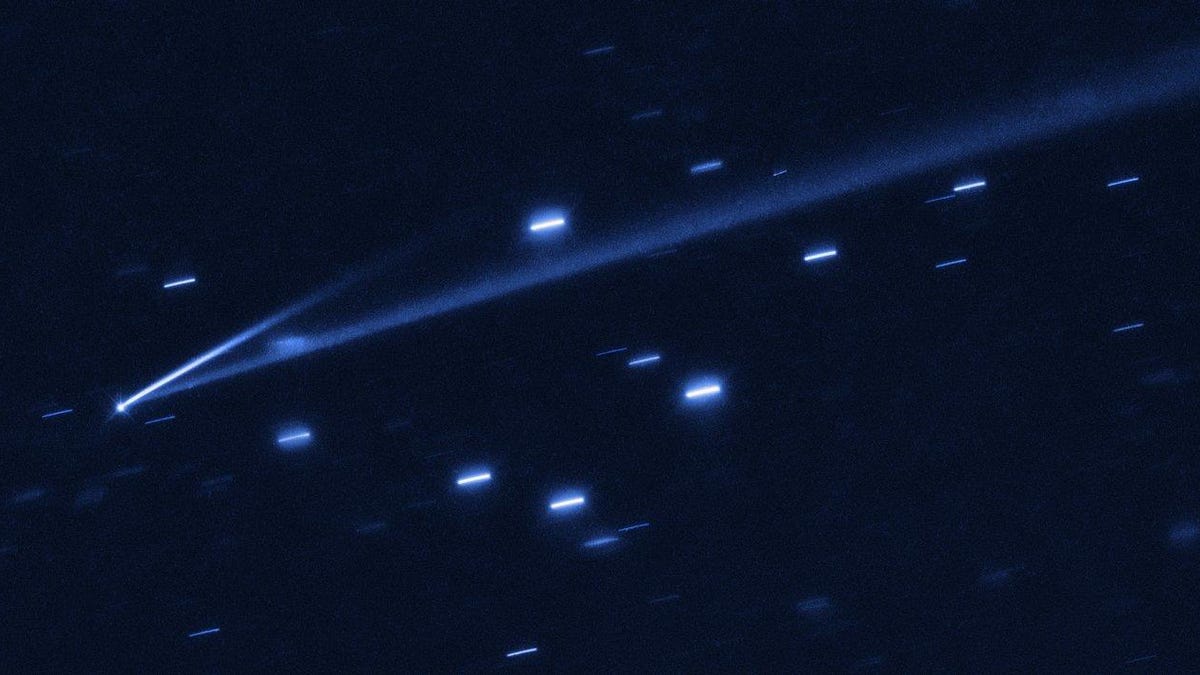NASA's Hubble nabs spectacular image of asteroid coming apart
Because of constant pressure from the sun, a space rock beyond Mars is spinning so much that it's literally cracking up.

The asteroid 6478 Gault as seen by the Hubble Space Telescope. Two narrow, cometlike tails of debris indicate that the asteroid is slowly undergoing self-destruction.
We first noted in January that an asteroid discovered decades ago was showing signs of transforming into a comet, but now astronomers using NASA's Hubble Space Telescope say the space rock may be completely falling apart.
The 2.5-mile-wide (4-kilometer-wide) asteroid 6478 Gault is located in the asteroid belt between Jupiter and Mars, where it was first seen in 1988. Though it's been observed by telescopes many times over the decades, it wasn't until last November that scientists saw signs something was changing. By January, Gault had developed a cometlike tail of dust extending over 249,000 miles (400,000 kilometers).
Active asteroid 6478 Gault last night from the @INGLaPalma after discovery by @TheGenghisKen @fallingstarIfA . The ejected dust extends > 400,000 km, more than the Earth-Moon distance.
— Alan Fitzsimmons (@FitzsimmonsAlan) January 12, 2019
From observations by @astrostevanus and @Sun_d_citizen @AstroQUB pic.twitter.com/Xc1ByV4OhJ
At the time, some astronomers suggested a collision with another object could've caused the asteroid to start spouting off, but a new paper from an international team of researchers concludes that Gault was actually ready to come apart, perhaps even without an impact to trigger the breakdown.
"This self-destruction event is rare," co-author Olivier Hainaut from the European Southern Observatory, explained in a release. "Active and unstable asteroids such as Gault are only now being detected by means of new survey telescopes that scan the entire sky, which means asteroids such as Gault that are misbehaving cannot escape detection any more."
The paper will be published in The Astrophysical Journal Letters.
The images from Hubble show Gault being trailed by two narrow tails of debris, indicating the material was thrown off in a pair of short bursts lasting between a few hours and a few days.
There are around 800,000 known asteroids in the asteroid belt beyond Mars, but astronomers estimate that this kind of crack-up happens only once per year. The asteroid's fragile state is attributed to something called the Yarkovsky-O'Keefe-Radzievskii-Paddack effect, or YORP torque. The basic idea is that electromagnetic radiation from the sun interacts with small objects like asteroids in ways that can cause them to spin faster and faster, becoming more and more unstable.
"It could have been on the brink of instability for 10 million years. Even a tiny disturbance, like a small impact from a pebble, might have triggered the recent outbursts," explained lead author Jan Kleyna from the University of Hawaii.
Astronomers say the tails will begin to fade in the coming months as the dust disperses into space. That is, unless 6478 Gault continues to fall apart before our eyes.

